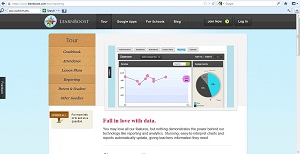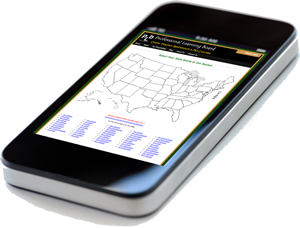Is it Safe to Use an Online Gradebook for my Classroom?
Posted by PLB · Leave a Comment

 An online gradebook is a tool that provides teachers’ a platform on the internet where they may record the grades and mark the progress of students on a transparent medium. The online gradebook also registers the attendance of the students. Most schools have started using this tool in order to stay transparent and make administration easier.
An online gradebook is a tool that provides teachers’ a platform on the internet where they may record the grades and mark the progress of students on a transparent medium. The online gradebook also registers the attendance of the students. Most schools have started using this tool in order to stay transparent and make administration easier.
There are many positives of an online gradebook:
- The concept of a gradebook on the internet subconsciously inculcates a habit of constant monitoring of the children’s results and attendance on the website. It transfers the responsibility of monitoring the students’ progress on to the parents’ laps and gets them involved in the academics of their children.
- Students and parents have immediate access to the grades and do not have to wait their entire winter vacation to get results.
- This system also allows for greater flexibility. It allows teachers to print progress reports, individual student grades, class averages, assignments et al.
While the positives are plenty, there are some negatives that need to be considered:
- The responsibility of maintaining one’s grade should primarily be the students, however this system could subtly relieves them of this.
- Since parents are continuously monitoring the students’ progress, teachers feel compelled to keep putting up grades to prove that they are organized and they are doing a good job. They also tend to load the child with assignments and projects.
- The focus on grading slowly tends to lean towards mere grades and not on constructive feedback to the students. Teachers also tend to grade everything that the students do, eliminating any room for them to grow without the shadow of the marking system over them.
Teachers may, however, also refrain from allowing parents access to the gradebook. It is suggested that educators maintain good communication with the parents and decide how much access they should get. Finding the right balance is crucial in this equation. It is also important that teachers supplement grades given with individual student feedback in class. Students need to feel like you are trying to help them and not just interested in grading them. Taking a little effort to encourage students while providing feedback on their grades will go a long way to ensure better learning in the classroom.
There are a number of gradebook software programs that exist online. Engrade, ThinkWave and LearnBoost are a few examples. These programs have attendance sheets that allow you to mark students as present, absent or tardy. A calendar allows you to mark the homework that students have to do and monitor whether they have done it or not. Most of the software allow teachers to have a flexible grading system where they can give different weightage to different assignments. It also allows easy sharing between teachers and parents. Teachers can determine how much access a parent has with their password-secured account. Parents are, thus, able to check their child’s progress and communicate with the teachers. Some systems also aid you in your lesson plan, allowing you to add your reflections and comments.
Online gradebooks are easy to handle and do not require any training. They give the teacher space to decide how technical they want it to be and let them pick and choose the features that they are comfortable with, making their lives easier and a lot more organized.
Learn More… Take this course: Technology for Education Leaders
Discuss Here: What are your opinions on using an online gradebook to maintan grade records?



